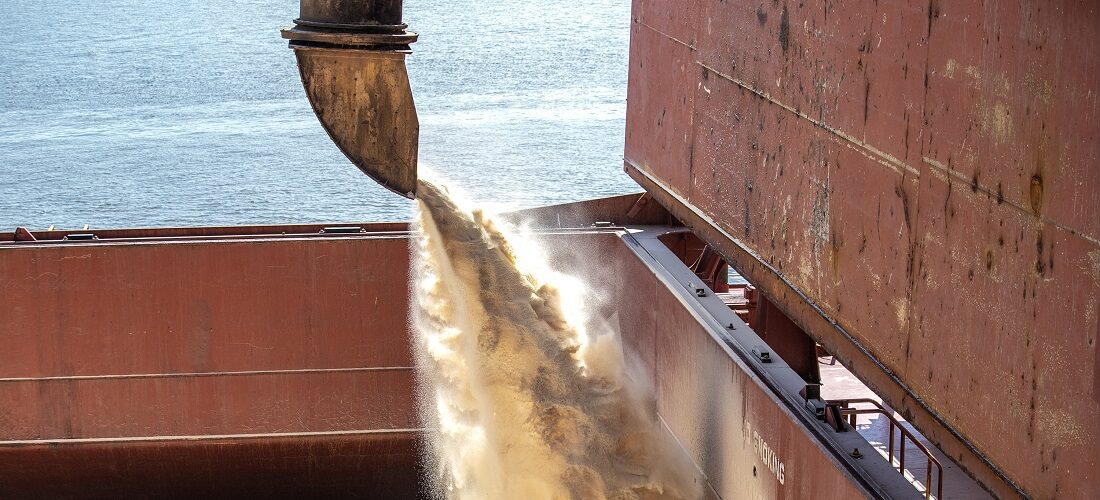
Brazilian Sugar Exports via Containers Surge at Paranagua Port
Nov, 03, 2023 Posted by Gabriel MalheirosWeek 202344
Brazilian sugar exports, typically shipped in bulk carriers, have been gaining traction at the container terminals of Paranagua Port, the country’s second-largest port for exports. According to figures from the company that manages the Paranaguá Container Terminal (TCP), 2,564 TEUs (20-foot container equivalents) of sugar were handled between January and September 2023, equivalent to 66.7 thousand tonnes, a staggering 56-fold increase compared to the same period last year.
In comparison to 2019, the year before the pandemic and the subsequent global logistics crisis that caused a shortage of containers, there has been a 42% growth in the cumulative total from January to September.
The chart below shows Brazil’s sugar exports in containers (HS 1701), measured in TEUs, according to the DataLiner maritime information service.
Brazilian sugar exports | Jan 2019 – Sep 2023 | TEU
Source: DataLiner (click here to request a demo)
Felipe Cezario de Andrade, the commercial coordinator of the terminal, attributes the significant increase in sugar shipments via containers to a combination of factors: the absence of India in the international market, the consequent appreciation of sugar in dollars, and the decrease in logistics costs for container transport.
“In the current scenario, there is no longer as much restriction on containers. If we look at a price history of over $3,000 last year, it has dropped to less than $1,000 this year,” he said. While bulk carrier freight prices tend to follow container transport prices, the devaluation has been more pronounced in the latter modality, notes the TCP’s commercial coordinator.
On the other hand, the average export price of Brazilian sugar has surged from $392 per ton in the first half of last year to $480 this year, a 22.5% increase, according to data from the Foreign Trade Secretariat compiled by the Ministry of Agriculture. The appreciation follows reduced availability in the international market after India, the second-largest producer after Brazil, restricted its exports to ensure domestic supply.
Andrade also states that the characteristics of markets previously served by India explain the increased demand for containers in Brazil. This is the case for countries like Mozambique, where imported volumes until August totaled 800 thousand tons – compared to 757 tons in 2022 – and Kenya, which increased its imports from Brazil by 2,698%.
“Some ports in Africa do not have the capacity to receive bulk carriers. So, in some destinations, selling in containers becomes mandatory. In addition, not every importer has the purchasing power to charter a bulk carrier or storage capacity to receive such quantities,” he adds.
In these cases, container shipping allows the exporter to send sugar in smaller 50 or 25-kilogram bags, eliminating the need to fill an entire bulk carrier with a capacity of about 60 thousand tons. This facilitates purchases by smaller importers and provides Brazilian exporters with better cash flow, according to Andrade.
“We already have a growth compared to the entire year of 2022 of over 27%. In other words, we still have four months to account for, and shipments [in this mode] are already 27% higher than last year,” says the commercial coordinator of the TCP.
Source: Globo Rural
To read the original news text, please access: https://globorural.globo.com/especiais/caminhos-da-safra/noticia/2023/11/embarque-de-acucar-em-conteiner-avanca-em-paranagua.ghtml
-
Economy
Jul, 06, 2020
0
Whilst imports plunge, exports hold firm but for how long?
-
Grains
Jan, 31, 2023
0
‘Arco Norte’ grain exports exceed those of Santos for the 1st time
-
Shipping
Sep, 02, 2021
0
World’s Largest Container Ship Successfully Passes Through the Suez Canal
-
Ports and Terminals
Feb, 13, 2023
0
New draft at Cattalini Terminals increase cargo handling potential

